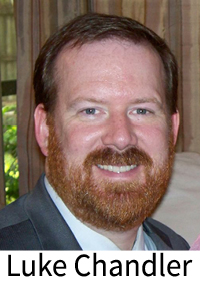

Luke Chandler preaches for the North Terrace Church of Christ in Temple Terrace, FL. He holds an M.A. in Ancient and Classical History and has currently participated in six seasons of archaeological excavation in Israel. He has served as an adjunct professor teaching Archaeology at Florida College.
Archaeology repeatedly confirms big biblical things such as cities, kings, and empires, but skeptics are unimpressed. Why would Bible authors not recall famous names from their history? The problem, skeptics say, is that Bible stories recall major events but do not preserve true details of their history. David, for example, may have existed but his life bore little resemblance to what we read in the Bible. Those "facts" were imported from later periods if not fabricated entirely.
We have enough ancient fiction around to understand the value in confirming historical people and events, but skeptics have a point. Details are more impressive, especially for a book claiming Divine inspiration and authority. Where can we find examples of archaeology illuminating smaller details from the Bible? New discoveries from a site in ancient Judah seem to do this very thing.
The Bible describes some unusual customs involving worship and sacred space during the 11th and early 10th centuries BC. This is the time of Samuel, Saul, and David, shortly before the Temple's construction. Recent excavations at Khirbet Qeiyafa, a contemporary site in Judah, uncovered evidence of these time-specific practices.
The Bible: The boy Samuel received his first message from God while "lying down in the temple of the LORD, where the ark of God was" (1 Sam. 3:3, ESV). Samuel was using God's house as a place to sleep! Eli the priest permitted the mixing of sacred and personal space. We do not see the Tabernacle used in this way prior to Samuel and do not read of sacred space in the Temples doubling as personal space. (Nehemiah evicted Tobiah, who was living in the Temple storage rooms - not the sacred areas - in Neh. 13:4-9.)
We see a mixing of sacred and personal space on two other occasions, both in the same 11th-10th century period. "After the Philistines returned the captured Ark, it was not placed in the Tabernacle (which was likley destroyed) but in the city of Kiriath-jearim in "the house of Abinadab" where it remained for "some twenty years," (1 Sam. 7:1-2) and perhaps longer based on other clues in the text. The Ark also resided in a private home for three months following David's first failed attempt to bring it to Jerusalem (2 Sam. 6:10-11).
Discovery: In Khirbet Qeiyafa, a city dating to this same period, we found three examples of mixed space. Ordinary buildings (i.e. residences) used only one or two rooms as sacred space and the remaining rooms as domestic space. Religious finds included a small altar, benches, basins, small model shrines, standing stones, offering tables, and vessels for drink offerings. The non-religious rooms in these buildings contained only typical domestic pottery and household items.
This kind of mixed sacred/domestic space is unusual in ancient Canaan. Philistine and Canaanite sites had dedicated temples and shrines for religious practice, as did later sites in Judah and Israel. Entire buildings were for religious practice. Our archaeological work at Qeiyafa exposed around 40% of the site but did not find any dedicated temple or shrine - only the examples of mixed space in the same period described in the Bible. The text preserves those details from a specific period.
The Bible: When David was first fleeing King Saul, the priests of Nob answered his request for a weapon by producing the sword of Goliath, which had been "wrapped in a cloth behind the ephod" (1 Sam. 21:8-9). The ephod was an exquisite High Priestly garment (Exod. 28:3-8). Why was Goliath's sword kept in the same room with sacred vestments? The Bible does not explain why, but this was an accepted practice at that time.
Discovery: One of the religious rooms at Qeiyafa yielded three iron swords near a standing stone and drink offering vessel. This practice mirrors details noted in 1 Samuel 21 (above). Weaponry was stored in a sacred area at a site from the same time period. We do not find this in later textual or archaeological sources relating to worship in Jerusalem.
Contrary to skeptics' claims, we can show that the Bible indeed preserves details unique to specific periods. This is a fresh tool we may use to persuade others why it is reasonable to put our faith in God's Word.